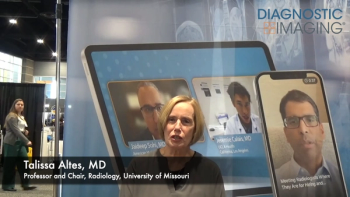
Report from SNM: Society launches Bench to Bedside molecular imaging campaign
With $2.6 million in early commitments, the Society of Nuclear Medicine passed the halfway point in its $5 million goal on the first day of a planned five-year campaign to promote the translation of molecular imaging discoveries into clinical practice.
With $2.6 million in early commitments, the Society of Nuclear Medicine passed the halfway point in its $5 million goal on the first day of a planned five-year campaign to promote the translation of molecular imaging discoveries into clinical practice.
The Bench to Bedside campaign will take a four-pronged approach, according to SNM president Dr. Peter S. Conti, a professor of radiology, pharmacy, and biomedical engineering at the University of Southern California in Los Angeles. Initiatives will include:
- supporting advocacy for molecular imaging through political and public outreach
- promoting collaborations between MI applications researchers, referring physicians, and patient groups
- training physicians and medical students about molecular imaging applications
- supporting translational research, including standardized protocols to speed molecular imaging's integration into clinical practice
GE Healthcare helped jump-start fund-raising with a $1 million donation. Siemens and Bristol-Myers Squibb Medical Imaging contributed $500,000 each. Philips committed $250,000, and FluoroPharm provided a $10,000 donation.
Molecular imaging will have a sweeping influence on healthcare in the next 10 years, Conti said. PET and SPECT, the primary imaging modalities used in nuclear medicine practice, are widely expected to be the gateways for MI into diagnostic imaging and image-guided therapy monitoring.
"Patients with cancer, heart disease, stroke, or debilitating neurological conditions benefit from earlier, more accurate diagnoses and safer, more effective treatments when their medical care includes scanning technologies such as PET with CT or SPECT," he said.
Molecular imaging represents an increasingly important component of the SNM's strategic vision, Conti noted during the opening session of the society's annual meeting in San Diego Sunday. SNM leadership has recognized a need for rebranding the organization's scope and mission by adding new clinical applications. The society's tag line will be revised to "Advocating Molecular Imaging Therapy," recognizing the importance of therapy to the range of medical services under the nuclear medicine umbrella.
Although the scale of the Bench to Benchside initiative is unprecedented for the SNM, nuclear medicine physicians have historically thrown support to emerging imaging technologies. Alliances forged by nuclear physicians in the 1990s helped overcome political opposition to PET. Outcomes research funded by the Institute of Clinical PET and presented at SNM meetings was considered crucial to establishing PET's clinical relevance and efficacy.
Newsletter
Stay at the forefront of radiology with the Diagnostic Imaging newsletter, delivering the latest news, clinical insights, and imaging advancements for today’s radiologists.




























